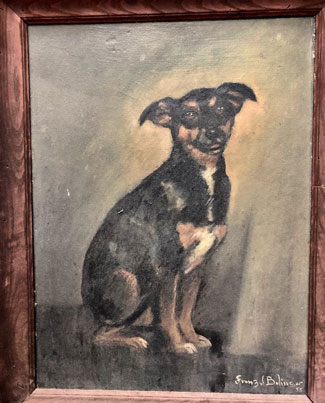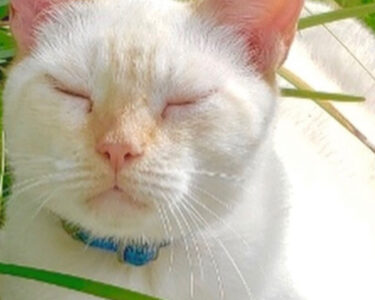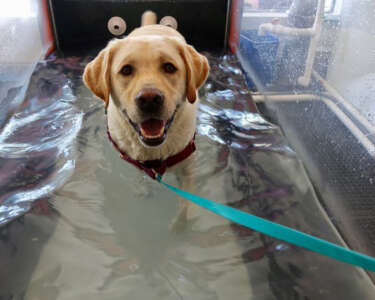Tucked between a McDonald’s and a bank on the busiest street in Miami, is an unassuming single-story building that has a story to tell.

Much like South Miami itself, its face and personality have evolved over the years, but if you know where to look, bits and pieces of its history can be discovered. I’ve worked there for nearly twenty years, providing the same services that have made this building a community landmark since the 1950s. Glass syringes and antiquated medical instruments have been replaced by digital marvels and state-of-the-art veterinary techniques, but the spirit remains the same.
Before the malls, fancy restaurants and the glittering monuments to modernity, South Miami was a small town within the big city of Miami, thriving on farming and trade enabled by the railroad. It bore only a passing resemblance to the town we know today. Segregation was rule, and the black community was not allowed east of US1, except to work. It was in this setting, in 1954, that our veterinary clinic was built. The hospital changed hands the next year when its first vet, Dr. Jones, passed away and his widow sold it to Dr. Billy Austin. What is now Sunset Place was once the Holsum Bread Factory, which enriched the town with the smell of freshly baked bread. Many changes would come to the South Miami community in the decades that follow.
In the sixties, segregation finally came to an end. Our building still bears scars from this period: part of what is now our operating room contained the entrance to the outdoor “blacks-only” bathroom. Beneath the plaster and paint that covers it now, one can just barely make out its outline. The hospital remained under Dr Austin’s direction for 37 years, until it passed to the hands of Dr. Ben Daniels in 1993.
As South Miami’s population diversified and Jim Crow passed into memory, our clinic similarly evolved. For the first time in its history, the clinic passed into the hands of a Latino woman. The name of the clinic was changed to Animal Health and Rehab Center and its interior overhauled to match its dynamic neighborhood. It was during a routine day at the veterinary hospital that a witness to this rich history was discovered: Chestnut the dog. He, or rather a portrait of him, had been living in the attic for 65 undisturbed years even as the world changed around him. The portrait, encased in an unadorned wood frame, is of a black and tan terrier gazing straight ahead, as if looking out across the expanse of time. It is signed by Franz Josef Bolinger, a well known landscape painter of the Everglades, popular during the 60s and 70s. The portrait has a name signed in pencil on the back of the frame: Chestnut.
Whether Chestnut was Dr Jones’ dog, or perhaps the artist’s pet, we may never know. What we do know is that, for all the changes that time inevitably brings, some things never change… some things and Chestnut.
Dr Sanchez-Emden is the founder of the Animal Health and Rehab Center in South Miami. She has been practicing veterinary medicine for 25 years. As a Certified Veterinary Journalist, she is the resident veterinarian for Telemundo. She authored the book “CHIHUAHUAS: How To Be Your Dog’s Best Friend”. She also hosts the podcast show “Hablando de Perros y Gatos con Dr Marta” available at the main internet platforms. Follow her her blog, drmartavet.com, and on social media @Drmartavet on You Tube, Instagram and Twitter. Also find her at Facebook.com/dr.sanchezemden and animalhealthrehab.com














 Deering Estate
Deering Estate
 Massage Envy South Miami
Massage Envy South Miami
 Calla Blow Dry
Calla Blow Dry
 My Derma Clinic
My Derma Clinic
 Sushi Maki
Sushi Maki
 Sports Grill
Sports Grill
 The Healthy Kitchen
The Healthy Kitchen
 Golden Rule Seafood
Golden Rule Seafood
 Malanga Cuban Café
Malanga Cuban Café

 Kathleen Ballard
Kathleen Ballard
 Panter, Panter & Sampedro
Panter, Panter & Sampedro
 Vintage Liquors
Vintage Liquors
 The Dog from Ipanema
The Dog from Ipanema
 Rubinstein Family Chiropractic
Rubinstein Family Chiropractic
 Your Pet’s Best
Your Pet’s Best
 Indigo Republic
Indigo Republic




 ATR Luxury Homes
ATR Luxury Homes


 2112 Design Studio
2112 Design Studio
 Hamilton Fox & Company
Hamilton Fox & Company
 Creative Design Services
Creative Design Services
 Best Pest Professionals
Best Pest Professionals
 HD Tree Services
HD Tree Services
 Trinity Air Conditioning Company
Trinity Air Conditioning Company
 Cisca Construction & Development
Cisca Construction & Development
 Mosquito Joe
Mosquito Joe
 Cutler Bay Solar Solutions
Cutler Bay Solar Solutions


 Miami Royal Ballet & Dance
Miami Royal Ballet & Dance
 Christopher Columbus
Christopher Columbus
 Pineview Preschools
Pineview Preschools
 Westminster
Westminster
 Carrollton
Carrollton
 Lil’ Jungle
Lil’ Jungle
 Frost Science Museum
Frost Science Museum
 Palmer Trinity School
Palmer Trinity School
 South Florida Music
South Florida Music
 Pinecrest Orthodontics
Pinecrest Orthodontics
 Dr. Bob Pediatric Dentist
Dr. Bob Pediatric Dentist
 d.pediatrics
d.pediatrics
 South Miami Women’s Health
South Miami Women’s Health

 The Spot Barbershop
The Spot Barbershop
 My Derma Clinic
My Derma Clinic




 Miami Dance Project
Miami Dance Project

 Rubinstein Family Chiropractic
Rubinstein Family Chiropractic
 Indigo Republic
Indigo Republic

 Safes Universe
Safes Universe
 Vintage Liquors
Vintage Liquors
 Evenings Delight
Evenings Delight





 Atchana’s Homegrown Thai
Atchana’s Homegrown Thai
 Baptist Health South Florida
Baptist Health South Florida

 Laser Eye Center of Miami
Laser Eye Center of Miami
 Visiting Angels
Visiting Angels
 OpusCare of South Florida
OpusCare of South Florida

 Your Pet’s Best
Your Pet’s Best





 HD Tree Services
HD Tree Services
 Hamilton Fox & Company
Hamilton Fox & Company


 Creative Design Services
Creative Design Services